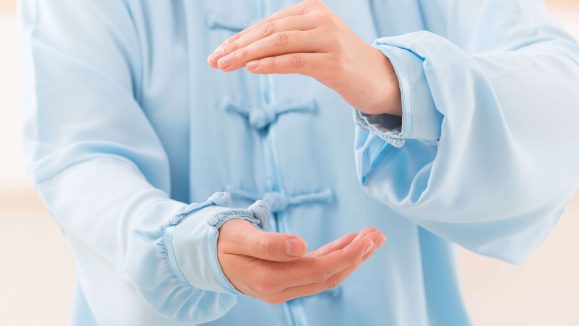Ophthalmologists and industry experts alike continuously put their heart and soul into developing the best diagnoses and treatments for eye disease – and these efforts are helping to raise the bar and yield better results.
For example, artificial intelligence (AI) is a popular buzzword today, not only in ophthalmology, but in many other industries as well. Its potential usefulness is only limited by the imagination.
“I had glaucoma and I had already lost 40 percent of my eyesight. The problem with my disease was that it couldn’t be detected. Finally, I could detect the disease with the help of my co-founder, who is a medical doctor,” said Kevin Choi, CEO of Medi Whale, South Korea.
“I realize that low symptoms or no symptoms can be a very big problem. That’s why I set up Medi Whale. We try to detect eye diseases in their early stages,” explained Mr. Choi.
Medi Whale develops auto-screening products using AI to help people detect eye diseases. It is quite impressive that their AI can make a diagnosis in 30 seconds.
Besides South Korea, this could possibly benefit other Southeast Asian countries that have problems involving combinations of eye disease and diabetes, for example. Currently, the screening system covers diabetic retinopathy, cataract and age-related macular degeneration (AMD). For each disease, 95 percent accuracy has been achieved.
In early stage diagnoses and detection of eye diseases, there might be some false positives, but it is nonetheless a great benefit to society. And with these results, ophthalmologists can look forward to making more diagnoses with higher accuracy using AI in the future.
Looking toward lasers
Although lasers have been used in eye disease treatment for quite some time, could they be the next gold standard?
“In our training, we used anti-VEGF for AMD treatments. I still prefer anti-VEGF treatment and only use laser treatment for patients who do not respond well to anti-VEGF, as a second line therapy,” said Dr. Kuo Chi-Hung, from the Department of Ophthalmology at National Taiwan University.
“There are a few different types of anti-VEGF. If a patient doesn’t respond well to one, the ophthalmologist can switch to another anti-VEGF. The patient might have a better response to that. So, we have a few options for treatment,” added Dr. Kuo. “Laser always has some trauma on the macula. That’s the last thing we want to see, because it might cause scar formation. The patient’s vision might be affected.”
Nonetheless, in the anterior segment, laser incision – instead of using microkeratome – has become a gold standard. Microkeratome is a precision surgical instrument with an oscillating blade that’s used to create the corneal flap in LASIK or ALK surgery. It is used to cut the cornea flap all over the world.
“Maybe there is a future for lasers in the posterior segment. It might be useful for the treatment of diabetic macular edema (DME). Of course, younger ophthalmologists would like to try new things. And in Taiwan, we’re able to discuss new methods or ways for treatment with our teachers,” said Dr. Kuo.
Collaboration begets affordable care
In India, many people do not have access to good healthcare and technology. Cost is a very big issue in India, and Dr. Ashish Ahuja is one of the doctors who is trying to solve this problem by bringing better healthcare to people, in even the most remote parts of the country.
Dr. Ahuja plans to set up an innovation lab in Mumbai to create a platform where doctors and engineers can collaborate. Many people have creative solutions and some of these innovations have the added advantage of being low cost as well. But sometimes, doctors do not know who to approach and how to go about it.
“We will have software developers, virtual reality app developers, people who are working on augmented reality, data scientists, people working on artificial intelligence, 3D printing experts, biomedical engineers, mechanical engineers, etc., on one platform. They will be able to tell us the limitations – what is possible and what is not. And we can share our ideas on what devices we want,” shared Dr. Ahuja.
“What was not possible 10 years ago is easier to achieve now. For example, with 3D printing, we now can print using nylon, and even metal printing is possible. I think it’s possible that 10 years from now, everyone can have a 3D printer in their house, and the only intellectual property in it is the SD and files. The files will be ready for 3D print, and we will be able to print whatever devices or components we need,” he added.
So, how can we have good retinal eye care across India, even in the smallest villages in the rural areas? In the rural areas, the best quality equipment is not a necessity, but a working model will do.
“For example, for a microscope, we can just get the lenses we need, and then we can use a 3D printer to print the components to hold the lenses. It is possible to decrease the cost by a factor of 10,” said Dr. Ahuja.
“The technology that we have now was probably science fiction 20 years ago. In the future, we might have fundus cameras located in convenient public places, where people can have images taken, and a report printed out. They can then go to see a doctor with this report.”
“Also, the smartphone cameras of the future should probably be able to take good quality fundus images, which you can take in the comfort of your own home and send to your doctor.”
During his fellowship, Dr. Ashish Ahuja worked on a video recording system for ophthalmology. Everybody was working on fundus imaging using smartphone cameras, but he decided to do research on something else. He devised a headset with condensing lenses to be used to image the retina.
“I fixed a small spy camera in front of one of the eye pieces, and I used a telephoto lens. I could get a reasonably good video out of this setup. The device also has a Wi-Fi antenna and it relays the images to a smartphone for easy sharing. The cost is really low – about 4,000 Indian rupees. And it was a good working prototype,” said Dr. Ahuja enthusiastically, who received an award for his invention at the Asia-Pacific Vitreo-retina Society Congress (APVRS 2018), recently held in Seoul, Korea.
It’s an exciting moment in the field, with ophthalmologists collaborating with various experts, to bring patients the machines, diagnoses and treatments of the future. And as technology advances, they will be able to bring costs down, so that patients can enjoy the best cutting-edge eye care at more affordable prices.
Editor’s Note: This article is an excerpt of the PIE Talks Series, APVRS Seoul Edition. Full videos can be found in PIE Magazine’s YouTube Channel.



